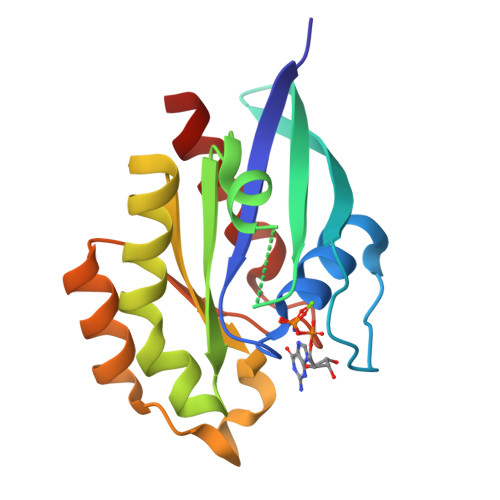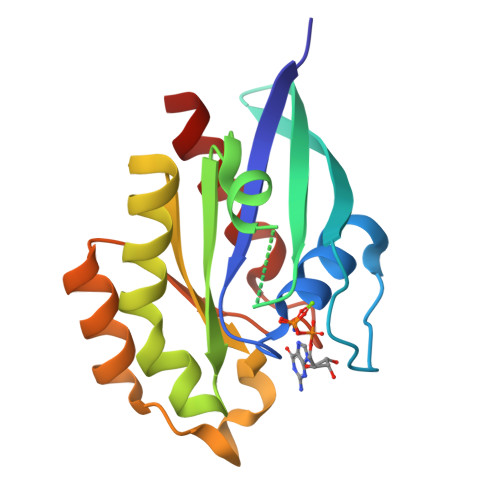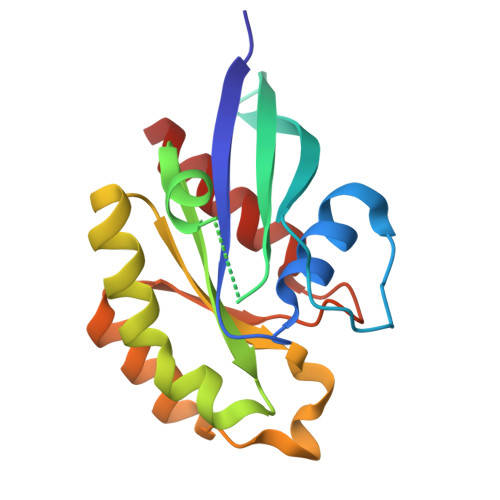Structural basis for Rab23 activation and a loss-of-function mutation in Carpenter syndrome.
Chau, Y.Y., Liang, H., Tung, W.L., Hor, C.H.H., Aik, W.S.(2024) J Biological Chem 301: 108036-108036
- PubMed: 39615683
- DOI: https://doi.org/10.1016/j.jbc.2024.108036
- Primary Citation of Related Structures:
8YIM, 8YL3, 8YNR, 8YO0, 8YP0 - PubMed Abstract:
Rab23 is a member of the Rab family of small GTPases. It plays crucial roles in Hedgehog signaling, ciliary transport, and embryonic development. As a small GTPase, Rab23 cycles between the GDP-bound inactivated state and the GTP-bound activated state. Mutations in Rab23 is directly implicated in Carpenter Syndrome, a development disorder characterized by deformed skulls, abnormal fingers or toes, and intellectual disabilities. Several clinical point mutations, e.g. M12K, C85R and Y79del, have been found to occur within the GTPase domain. However, the mechanisms of activation of Rab23 and pathogenesis of its clinical mutants are still unclear with limited structural information. So far, there are only two reported crystal structures of mouse Rab23 in complex with GDP. Here, we determined high-resolution crystal structures of human Rab23 and the human Rab23 Y79del clinical mutant, in complex with GDP and GMPPNP, a non-hydrolysable GTP analogue, respectively. Supported by in vitro biochemical and functional analyses, we demonstrated that the Y79 deletion mutant exhibited structural distortions in the Switch II region relative to that of the wild-type. The structural changes potentially disrupted the binding of Rab23 Y79del to its interacting partners, thus leading to a loss-of-function and the development of Carpenter Syndrome.
Organizational Affiliation:
Department of Chemistry, Hong Kong Baptist University, Kowloon Tong, Hong Kong SAR, China.




















